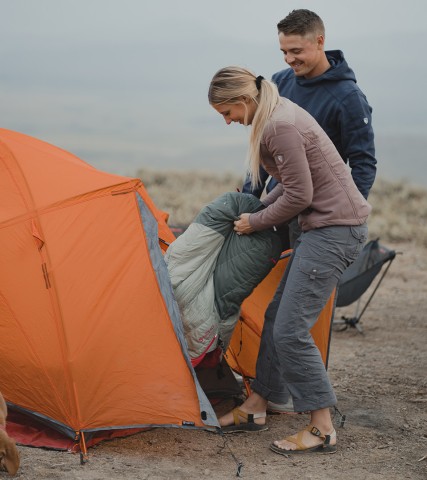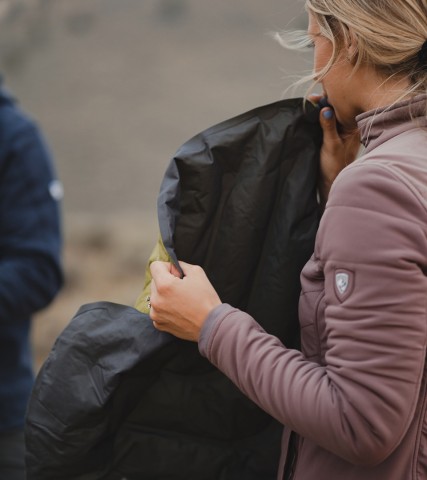- 1. Key Takeaways
- 2. Things to Consider Before Purchasing a Tent
- 2.1. What Type of Camping Do You Need the Tent For?
- 2.2. Will You Be Camping Alone or in a Group?
- 2.3. When Will You Be Camping?
- 3. Types of Tents
- 3.1. Dome Tent
- 3.2. A-frame/Ridge Tent
- 3.3. Tunnel Tents
- 3.4. Geodesic Tent
- 3.5. Cabin Tents
- 4. Our Tips on Choosing the Best Camping Tent for Your Trips
- 4.1. 1. Know How Much You’re Willing to Spend
- 4.2. 2. Consider the Tent’s Overall Capacity and Comfort
- 4.3. 3. Keep the Tent’s Size and Weight in Mind
- 4.4. 4. Check How Long It Takes to Pitch
- 4.5. 5. Pick the Right Seasonality
- 4.6. 6. Make a Tent Features Checklist
- 4.7. 7. Don’t Forget About the Accessories
- 4.8. 8. Learn How to Maintain Your Tent
- 5. Final Thoughts
- 6. FAQs
- 6.1. How can you tell if a tent is good quality?
- 6.2. How long do tents last?
- 6.3. Are tents 100% waterproof?
- 6.4. Does the color of a tent matter?
- 6.5. Can you leave a tent up all year?
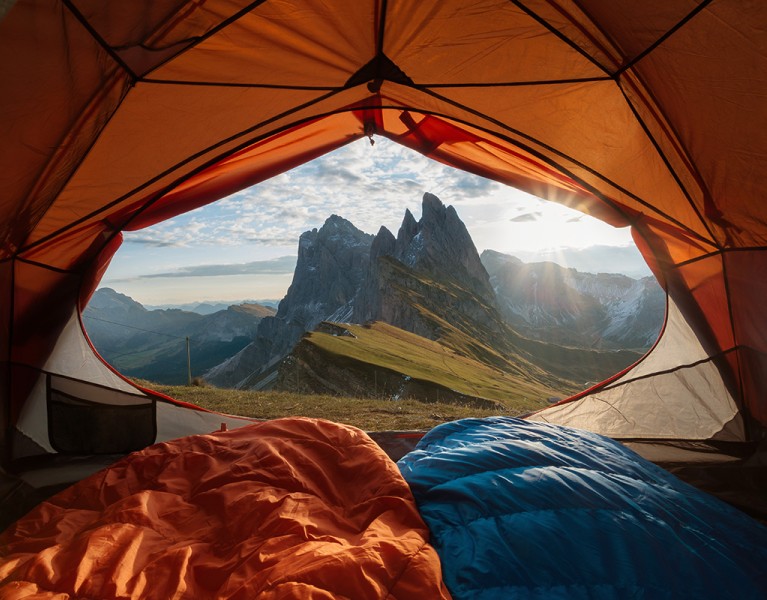
Buying a Tent: KÜHL’s Tips on Choosing the Best Camping Tent
Table of Contents [Show]
Buying a tent is the first step in your first camping trip. And it can be an overwhelming decision to make as a beginner camper.
When choosing a tent, your primary focus should be making your nights in the backcountry as comfortable and safe as possible. You must understand the difference between 2, 3, 4, and 5-season tents and what type suits your camping style, whether backpacking, car camping, or overlanding. It's also crucial to understand the different types of accessories and camping tent features that add to the camping experience.
Let's break down the process of choosing a tent to make it simpler for you. This tent-buying guide will touch on all the basics of buying your first camping tent, from type to seasonality, capacity, and important features and accessories.
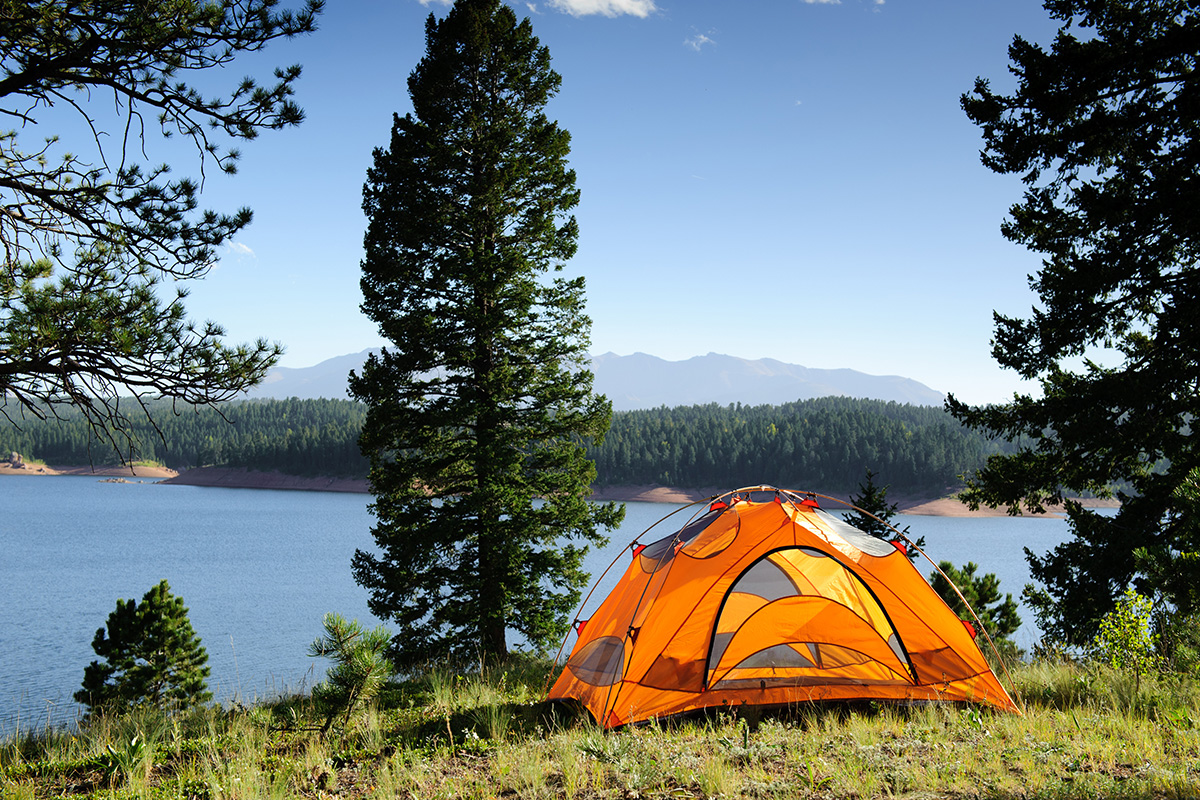
Key Takeaways
- You need at least two tents for year-round camping, ideally a 3-season tent and a 4-season model. 4-season tents are not meant for year-round use.
- 3-season camping tents offer the best bang for your buck by balancing versatility with cost.
- Contrary to most people's beliefs, 4-season tents are meant for winter camping only, not year-round camping.
- Lighter camping tents are best for portability. But beware of trade-offs like reduced severe weather protection, livable space, and durability.
Things to Consider Before Purchasing a Tent
Tents are among the main gear purchases that every backpacker has to make. While they are relatively simple, there are a lot of decisions to make.
What Type of Camping Do You Need the Tent For?
A crucial consideration for how to choose a tent is the kind of camping you will be doing. Will you be backpacking, car camping, or glamping? There are over 25 different types of camping tents, and your choice will depend on the kind of camping you are into.
Backpack Camping
Backpack camping is a mix of hiking and backcountry camping. This is when you carry all your camping gear, including your tent, sleeping bag, and other vital accessories, on your back.
As you can imagine, your main focus when buying the best tent for backpack camping will be its size and weight. A rule of thumb when backpacking is going for items that weigh less and occupy less space. Check out our backpacking checklist for more tips on what to prepare.
You want your tent to be as light as possible and small when packed down. Of course, your backpacking tent also needs to be bombproof to stand up to bad weather.
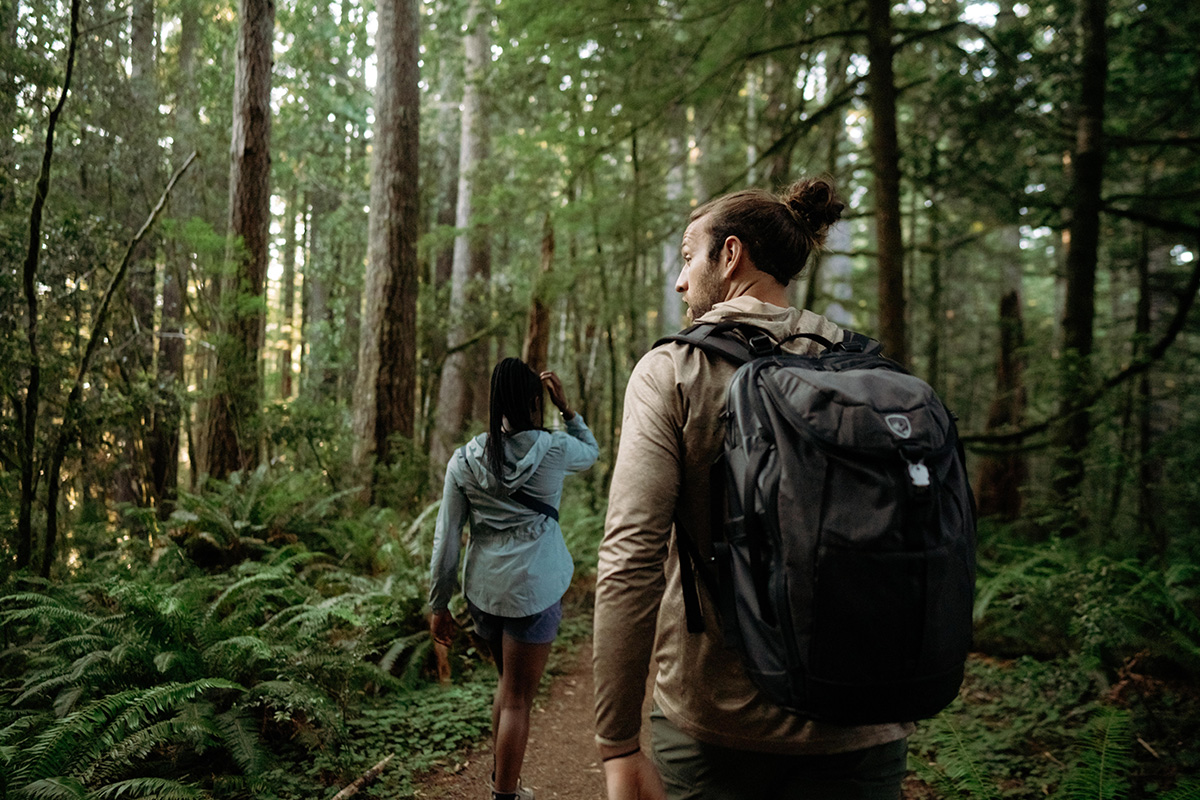
Car Camping
Generally, car camping is when you load up all your camping gear and drive to the various car camping spots. This is the most common type of camping in the US today for obvious reasons. There's no ferrying a backpack half your weight on rugged terrains.
When car camping, you park right next to the designated tent pad, meaning you are free to bring additional luxury items that you'd otherwise skimp on when backpack camping, including your favorite cast iron Dutch oven.
From a tent's point of view, you don't have to worry about the packed size and weight of the tent when car camping. Whether you want to bring a large family camping tent or a memory foam mattress, you can do it, so long as there's room in your car. Alternatively, you can consider purchasing a rooftop tent which will save quite a bit of space for any extra luggage and equipment in your vehicle.
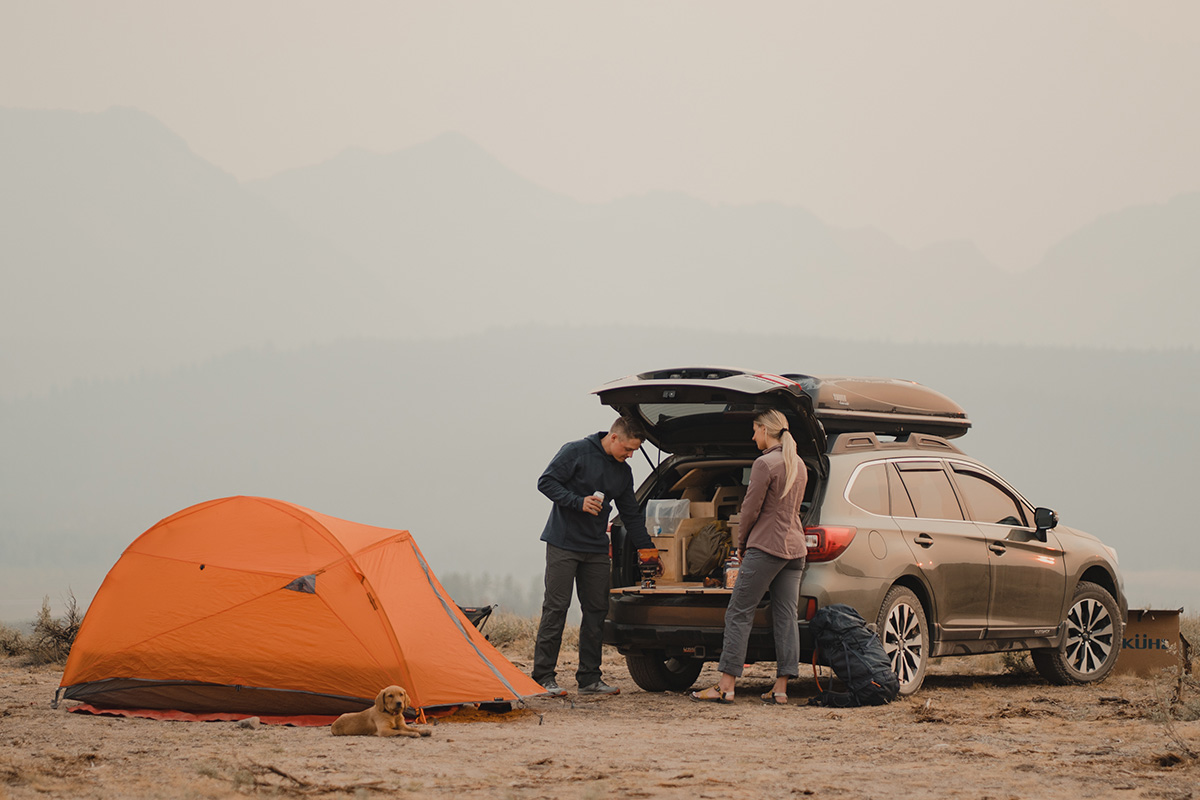
Glamping
Glamping is a relatively new style of camping that combines glamor and camping. This is a camping experience that involves exploring the wild outdoors while enjoying accommodation amenities and comforts that you wouldn't expect with traditional tent camping. We are talking of plush blankets, a bed, running water, and the option to prepare delicious meals. You can call it "roughing it," but in style.
Glamping is a thing today. Tents purposely engineered for glamping are usually spacious, solid, and durable. While they ooze class, they are typically heavy and not the easiest to transport.
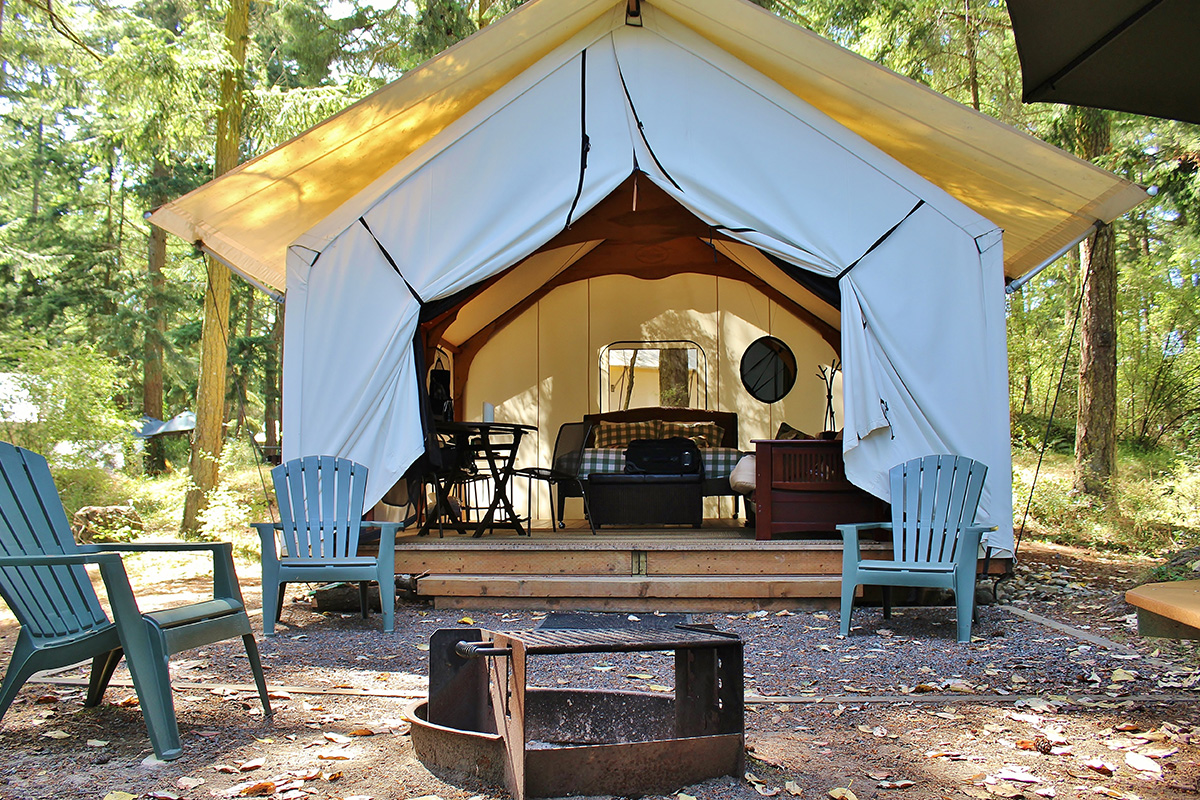
Will You Be Camping Alone or in a Group?
Camping solo or as a group can also influence your tents buying guide. This usually has a lot to do with transporting the tent and ease of setup.
With solo camping, you want your tent to be "ultra-light" and occupy the least space possible in your backpack. But reducing the minimum trail weight (weight of the tent, rainfly, and poles) and packaged size often affects space, livability, and the tent's durability.
If you’re camping with friends or a partner, weight and space may be of less concern because you can split up the components of the tent. This allows you more leeway, especially in terms of space, durability, and helpful features, such as adjustable rainfly vents.
Also, keep in mind the ease of setting up the tent. If camping solo, you want a tent that you can set up alone within a few minutes. Otherwise, things can get really tough on you and even more difficult if you are a newbie camper who didn't bring the instruction manual.
When Will You Be Camping?
When comparing different types of camping tents, you will realize that they are season-rated. There are 1, 2, 3, 4, and even 5-season-rated tents. You don't want to use something other than a 4-season-rated tent for winter camping. What are the differences, anyway?
1-Season Tents
These basic, thin tents are meant for use during warm temperatures or in tropical conditions. The tent body often comes without a rainfly on it because they are designed purely for summer use. They also have very light waterproofing, meaning they can easily turn into a swimming pool with just a little bit of rain. Not something you'd want to use in inclement weather, right?
2-Season Tents
2-season tents are more popular than 1-season tents. But the two are often grouped together because there isn't much of a difference between them. Despite their name, keep in mind that you can only use 2-season tents in summer. They are often the cheapest types of tents. But that's partly because they also use cheap materials that impact their waterproof ability and durability. We wouldn't recommend taking a 2-season tent out on the trail.
3-Season Tents
These are tents that you can comfortably use in three seasons: spring, summer, and fall. They can also be stretched for use in the winter season with the proper outdoor clothing.
Three-season tents can be single-walled or double-walled. Either way, the best models have excellent waterproof abilities and ventilation and can withstand a decent amount of wind. If there's a category of tents that balances dependability and affordability, this is it.
4-Season Tents
A common misconception is that a 4-season tent can be used all year round. That is usually not the case. A 4-season tent is thoughtfully designed for use only in winter. They are highly waterproof and strong enough to withstand intense winds and heavy snow loadings that would, otherwise, damage a 3-season tent. However, this top-notch craftsmanship also comes with a higher price point to match.
A 4-season tent is not suitable for summer camping. Because they focus on keeping you warm and toasty in sub-zero temperatures, you will be sweating throughout if you try sleeping in them during summer.
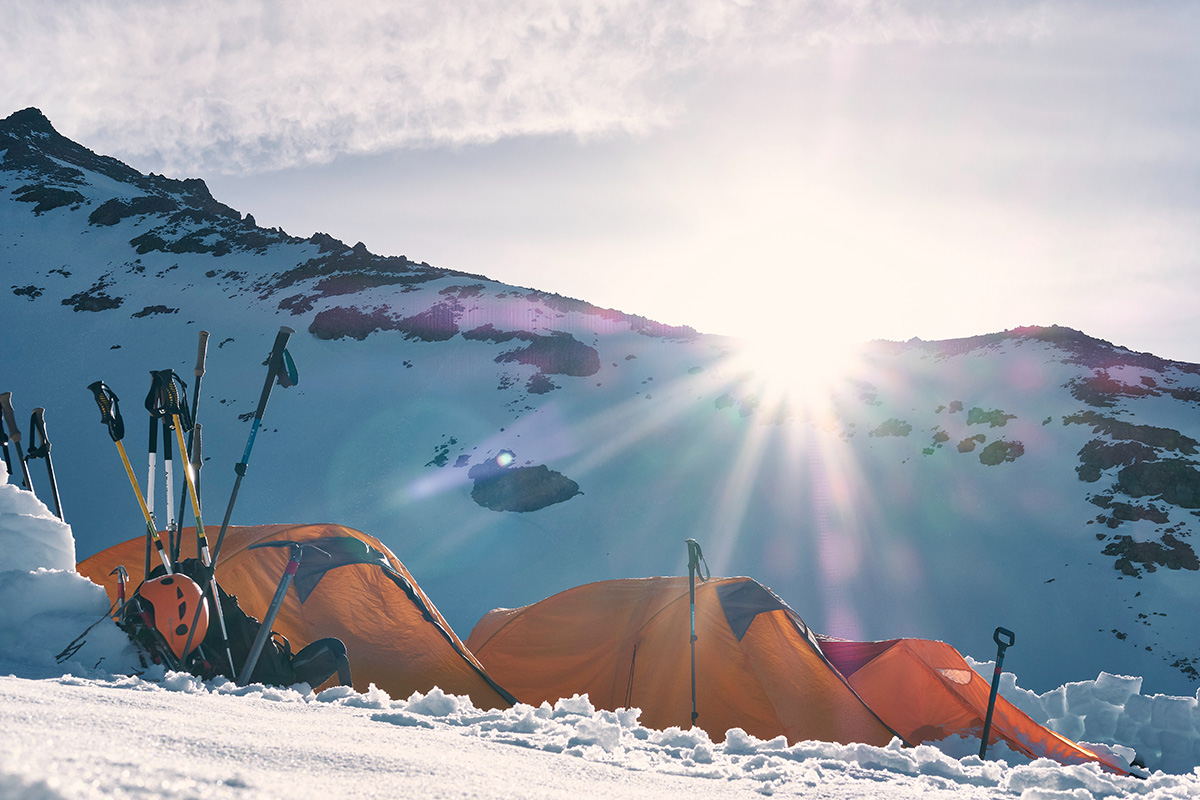
5-Season Tents
Five-season tents are the stronger cousins of four-season tents. They are robust tents capable of withstanding the most extreme winter weather conditions, particularly in the mountains and arctic and subarctic regions.
Five-season tents are virtually indestructible. They feature sturdier frames and construction, heavy-duty tent poles, more rigid fabrics, and strong aluminum or steel tent pegs. They also tend to be brightly colored because they are designed for use in low-visibility environments.
Because of their capabilities, 5-season tents also tend to be the most expensive, starting at $1000.
Types of Tents
A crucial step when buying a tent is understanding the common tent shapes. These are today's most common tent shapes and their major strengths and weaknesses.
Dome Tent
The dome-shaped tent consists of two flexible poles that cross over at the top and end on the tent's floor to form a square base. This is America's most popular tent style for several reasons.
Dome-style tents are widely available, so it's super easy to get your hands on one in pretty much any camping gear store. Plus, they tend to be relatively more affordable and cost-effective. Whether you are looking for the best camping tent for one person or up to eight campers, there is an affordable dome-shaped tent waiting right at the corner.
Another advantage of dome tents is their lightweight design, making them easy to carry. Most of them also have a larger headspace and a spacious vestibule that provides plenty of storage for your rain gear.
Though dome-style tents can handle different weather conditions, they get less stable as you scale up in size. Also, their design makes them more prone to catching wind. This increases the risk of being flattened or blown away.
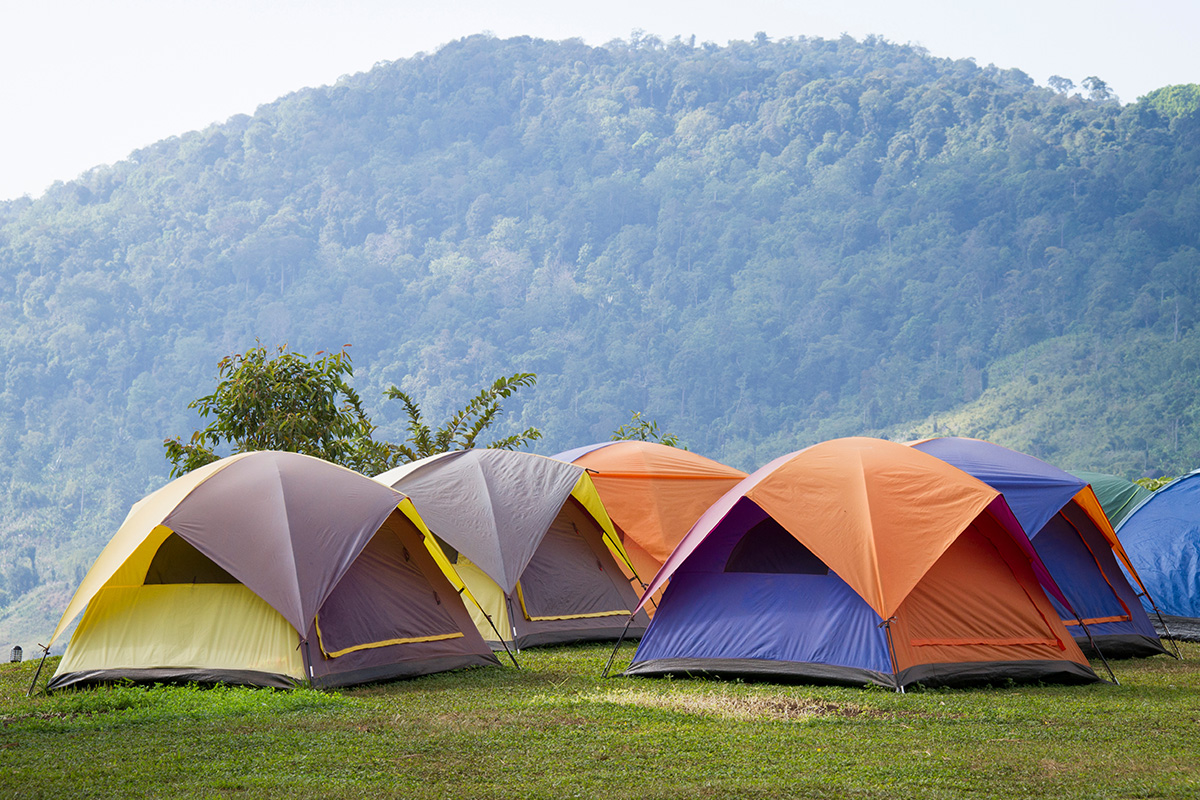
A-frame/Ridge Tent
The A-frame tent gets its name from its shape, which resembles the alphabet A. It’s also known as a ridge tent because it peaks in the middle and has two sloping sides.
Ridge-style is the oldest tent shape still in use today. Despite its relatively simple design, this style offers sturdy and stable camping tents, especially when you use more guy ropes to lash the fabric.
A-frame tents are relatively easy to pitch, too. They come in all sizes, ranging from tiny one-person tents to marquees for camping.
The most notable weakness of ridge-style tents is their limited sleeping and storage space. Of course, this won’t be an issue for solo campers without much indoor and outdoor gear. Another disadvantage of A-frame tents is their limited headroom, making them less ideal for other things besides sleeping.
Ridge tents also tend to be cumbersome. It will be a challenge to trek with one of these on your back. They are best used for car camping.
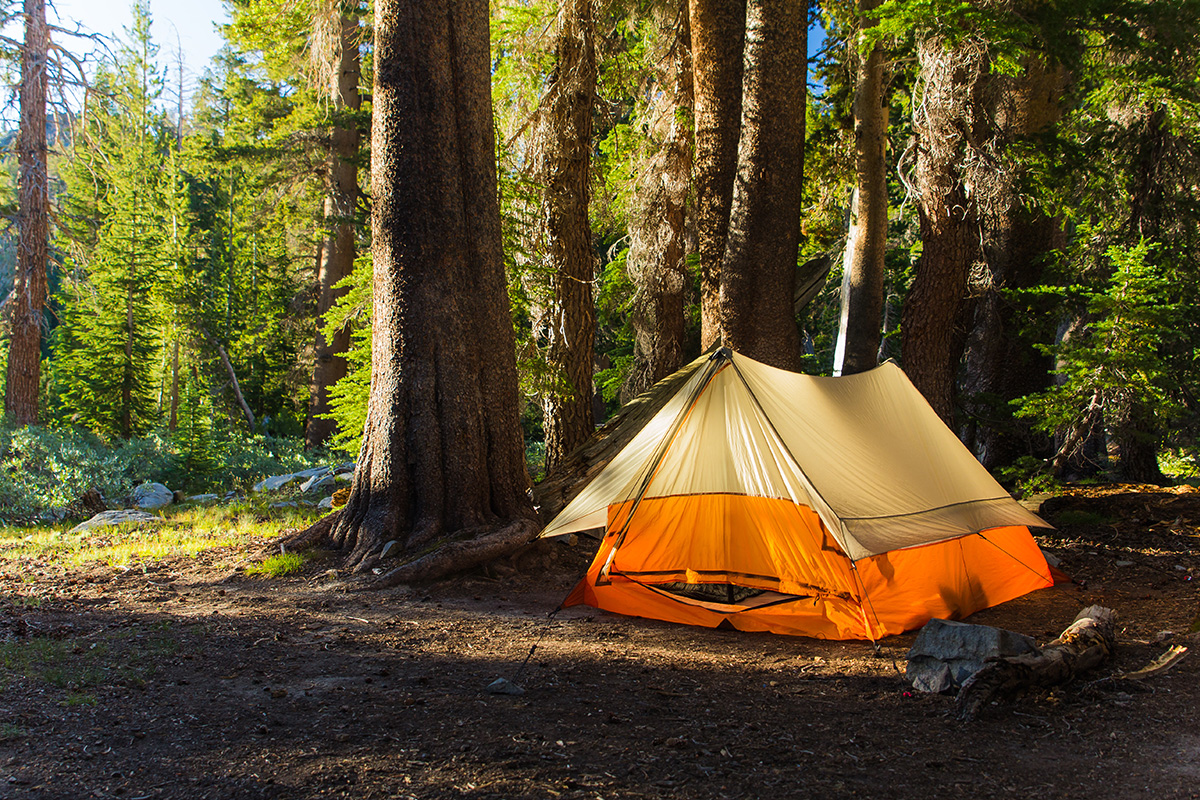
Tunnel Tents
Tunnel tents take the shape of a tunnel when set up, hence their name. These tents consist of two or more flexible poles bent into semi-circles and connected by the tent fabric. Depending on the design, you access the interior space via a slit in the side or a door at one of the ends.
The biggest selling point of tunnel tents is their massive living space. Tunnel tents’ design allows for several separate rooms that can accommodate up to 6 people in total plus gear. Actually, with a bit of creativity, these tents can accommodate more sleepers than their stated capacity.
The spacious design, coupled with plenty of headroom, also makes tunnel tents optimal for various purposes. Whether you want a tent for camping, playing, or sitting and reading, all options are available with these models.
So, what are some common disadvantages of tunnel tents? First, they can be problematic to pitch solo, especially when it’s windy. Speaking of wind, tunnel tents are usually not the best for camping in windy environments owing to their long walls. But this can be remedied by setting them up in line with the wind direction.
Also, most tunnel tents are not freestanding, meaning they need to be staked out. This can be an issue when camping in rocky terrain.
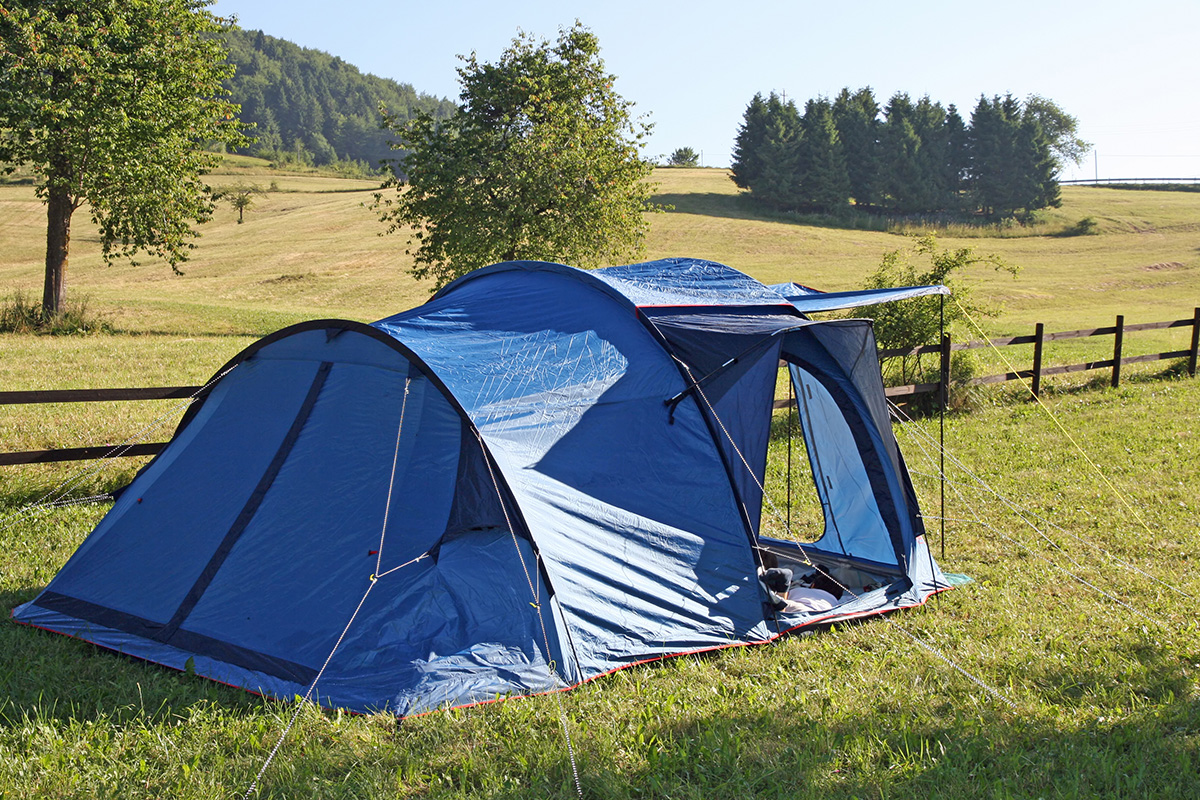
Geodesic Tent
A geodesic tent is a dome tent on steroids. Its frame structure consists of multiple poles intersecting at many places to create triangles and hexagons.
Using multiple poles distributes the stress, resulting in a sturdy and stable structure. The strength of these structures makes them suitable for expedition tents because they can withstand the roughest elements possible, including intense winds.
Despite their complex structure, pitching the geodesic tents is pretty straightforward. The intersecting design of these poles means they are self-supporting, so the tent takes shape easily.
Another benefit of geodesic tents is that they are freestanding. The advantage of this is being able to move the tent to a better location within the campsite.
Conversely, geodesic tents take time to set up because of the number of poles involved. Another major disadvantage of these tents is their weight. Geodesic tents weigh more and have a larger packed size than tunnel-shaped tents.
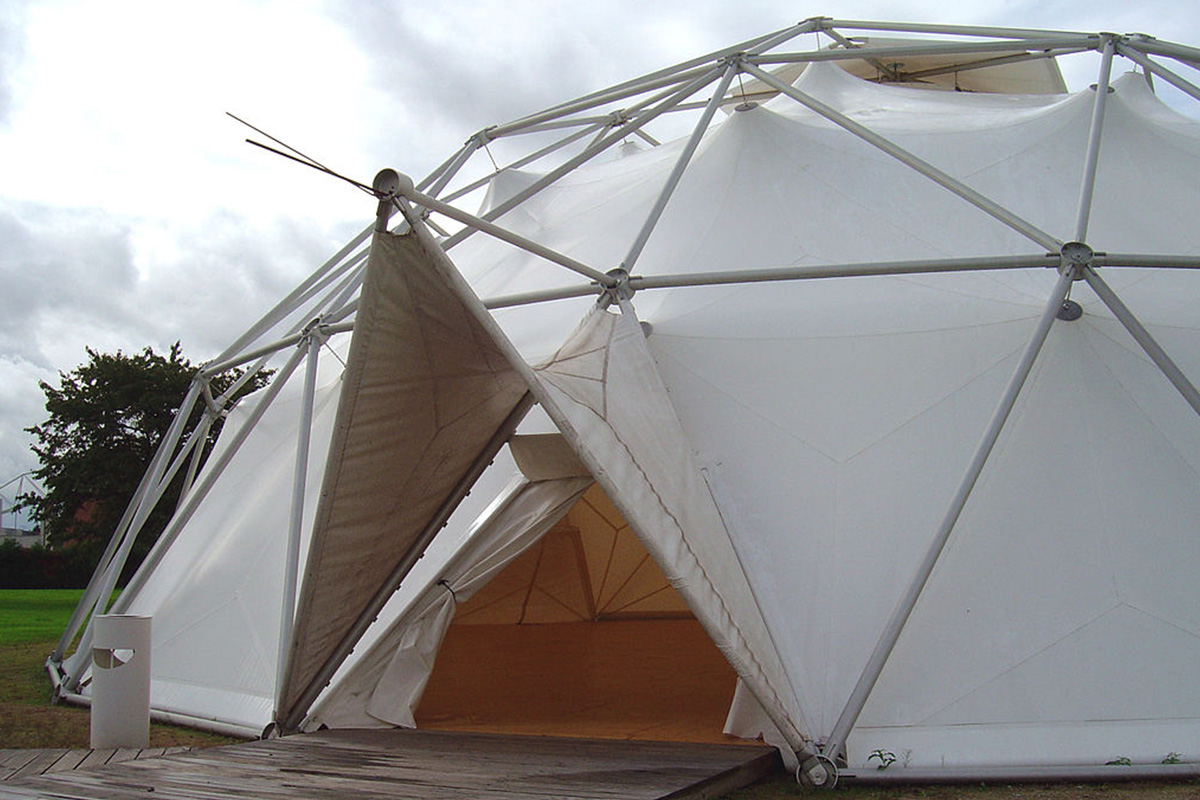
Cabin Tents
Cabin tents are another popular must-have in any legit tent buyers’ guide. A cabin tent is a freestanding type of shelter with a structure similar to a cabin. It’s easy to tell them apart because they typically have straighter walls and higher ceilings.
Cabin tent poles are typically made of steel or aluminum. Polyester and fiberglass poles are also standard nowadays. The fabrics are often made of weatherproof fabrics, such as ripstop canvas, polyester, or nylon.
Cabin tents offer a wide range of benefits to other camping tents. With their cabin style, these tents guarantee more headroom, so you don’t have to do everything crouched. Their strong walls also allow you to sit up straight with support from the walls. This can mean a world of difference compared to other tent styles where you must slouch or lean forward.
Another reason people invest in cabin tents is their increased floor space and improved privacy. If you are interested in a camping tent size that can accommodate a family or large group, stop here.
The major drawback of cabin tents is their weight and size. Considering the components involved, cabin tents are heavy and bulky. They may work for car campers but could be a terrible option for backpackers and hikers.
Secondly, their large boxy walls and relatively flat roofs make them more prone to damage by strong winds and heavy snow.
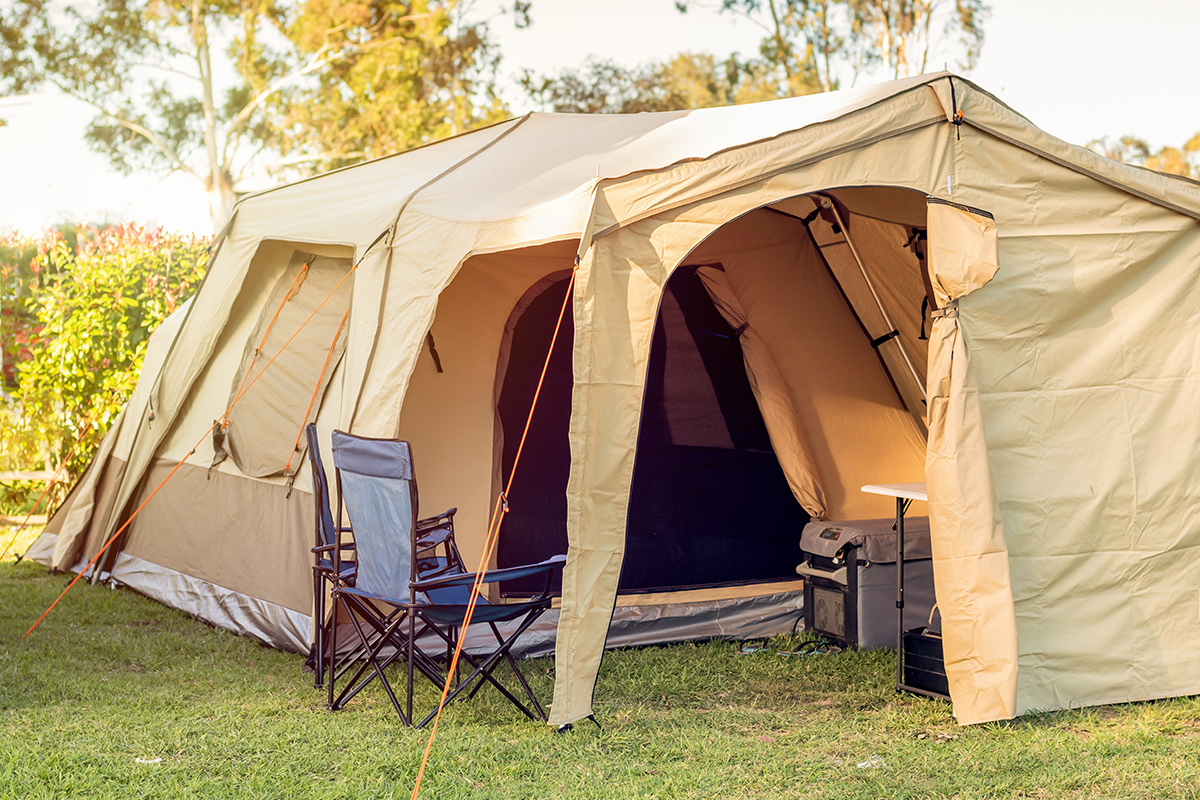
Our Tips on Choosing the Best Camping Tent for Your Trips
1. Know How Much You’re Willing to Spend
A good rule of thumb for tent buying as a beginner is to set a budget. Identify all the options within what you are willing to spend and narrow down to the best. The price of camping tents varies greatly, depending on the type, capacity, and construction quality.
Common tents cost $35 to $600, but the prices can get as high as $1500 or more if you are looking for the most durable models.
The tent is one area where you get exactly what you pay for, especially in terms of weight. You’ll realize that cheap tents tend to be heavier and bulkier and not as weatherproof. So, this really comes down to your style of camping and how often you’ll be heading out. If you are more into car camping, you could make do with a cheap but heavy tent and put the extra bucks toward a more comfortable sleeping bag.
2. Consider the Tent’s Overall Capacity and Comfort
As a newbie camper, it also pays to learn how to choose a tent based on its capacity. Every camping tent has a number indicating how many sleepers it can fit, for instance, 2-person, 4-person, or 10-person, etc.
The problem with these figures is that they are based on the number of sleeping pads that can fit inside the tent, not your comfort. Sometimes you want to stick with the designated number of sleepers. For instance, when you need to cramp together as a couple or group to remain warm when camping in winter.
Otherwise, we advise subtracting 1-2 from the recommended tent capacity. For instance, a couple will find a 3-4 person tent more comfortable, while a group of four may prefer a 6-8-person tent. You could size up by half or even double the capacity for larger groups. For instance, 10-12-person family tents will offer more sleeping quarters for 6-8 people.
3. Keep the Tent’s Size and Weight in Mind
As a backpacker, one of the areas you can trim weight is your tent. Backpacking tents fall into three weight categories:
- Ultralight tents (2-3 lbs)
- Lightweight (3-4.5 lbs)
- Heavyweight (4.5+ lbs)
While a light tent is king in terms of portability, don’t forget that the weight savings come in the form of limited features, such as fewer doors and windows and simplified pole structures.
Also, you must understand the potential trade-offs of going with a lighter tent, particularly cost, durability, ease of setup, and ability to withstand different weather conditions.
4. Check How Long It Takes to Pitch
How long it takes to set camp will depend on the type of tent, your familiarity with it, and how much help you have. Don’t forget that the weather conditions and the environment will also impact your speed of pitching the tent. Regardless of your experience level, setting up a tent in darkness or when the rain is beating you will take more time than usual.
We suggest picking a tent that is generally easy to pitch if you will be camping solo most of the time. It would help to practice setting it up in your backyard before doing it in the wilderness.
5. Pick the Right Seasonality
Depending on your preferred camping season, it’s crucial that you get a tent that is designed to withstand that season’s weather conditions.
A 3-season tent with a double wall (tent body and rain fly) will be a good pick for summer and fair-weather camping. The tent needs to have a lightweight fabric and plenty of ventilation to allow a good breeze through the interior space.
However, for winter camping, the focus should be on a 4-season tent. These tents have sturdy fabrics and rigid structures to keep you warm while standing up to whatever elements Mother Nature throws their way; high-speed winds, snow, and hail.
6. Make a Tent Features Checklist
A camping tent is only as good as the features it offers. But this also depends on what you are looking for in a tent. Here are some key features you may want to consider:
Tent doors - two doors are better than one. A tent with two doors means you can get in and out without climbing over your partner.
Tent windows - multiple windows and large mesh panels are suitable for improved ventilation, increased flow of fresh air, and panoramic views.
Poles - your ideal tent pole type will depend on your camping style, camping environment, and budget. Steel poles are the strongest and the most durable, but they are expensive, heavy, and not flexible; composite tent poles are strong, flexible, and lightweight but pricey; aluminum and fiberglass poles offer the best balance between affordability, strength, weight, flexibility, and price.
Rain fly - a rain fly is a waterproof cover that protects your tent from the elements, including rain and chilly wind. You can also use it for valuable shade in your living area during hot summer days.
Vestibules - a vestibule is a protected area at the front or side of your tent that offers additional storage space for your muddy boots and wet rain jacket. It’s not a must, but it will come in handy if interior space is at a premium.
Guy lines - these are thin ropes used with stakes or sticks to keep your tent and rain fly firmly anchored to the ground. Guy lines are not 100% necessary when the weather is calm. But they can be useful for stabilizing the tent, stretching the rain fly to promote ventilation, and maintaining tension across the tent walls to prevent sagging.
7. Don’t Forget About the Accessories
A tent is just one building block of your camping adventures. Remember to stock up on all other essentials for a safe and comfortable time sleeping under the stars. From women’s hiking clothing to the best men’s outdoor wear, our camping checklist has everything you should consider if you plan on packing this year.
8. Learn How to Maintain Your Tent
You’ve learned how to buy a tent. The next step is knowing how to maintain and care for it properly. Taking good care of your tent allows it to last many years, saving you money. Caring for your tent is simple; always ensure it’s clean and 100% dry before packing it for storage.
Final Thoughts
Learning how to pick a tent is significant because your tent is not just a shelter. It’s your home base in the wilderness. And your safety and comfort are dependent on the decisions you make during the buying process.
To this point, we bet you know what to look for in a tent and are familiar with a few tent brands. Remember, if you camp all year round, you will require at least two tents: a waterproof tent with awesome ventilation for summertime camping and a strong tent that can withstand strong winds and a decent amount of snow in winter.
Featured image by: Biletskiyevgeniy.Com.
FAQs
How can you tell if a tent is good quality?
These are the tell-tales of a good quality camping tent:
- Materials- nylon is the best material if you want a lightweight tent, but it breaks down fast; cotton canvas is breathable, insulating, and environmentally friendly, but it’s more susceptible to mold damage; canvas is long-lasting, but its tents are heavy and expensive.
- Ventilation- excellent ventilation is essential to promote a steady flow of fresh air and to avoid condensation on the walls as you sleep.
- Weight- if you are backpacking, the tent’s weight and packed size will significantly affect its portability.
- Heavy-duty zippers- look for a tent with heavy-duty, durable zippers that don’t stick.
- Easy setup- a good quality camping tent needs to be straightforward to pitch and break down. It should come with all the necessary components and clear instructions.
How long do tents last?
Tent lifespans vary, depending on the quality, the frequency of use, and how well you maintain it. Generally, most mid-range camping tents will last 2-5 years when used practically every weekend; 3-7 years when used once per month; and 4-10 years when used for only a week or so annually.
Are tents 100% waterproof?
No tent, even the best ones, can be 100% waterproof because sewing fabrics leaves tiny holes. Most tents are water-resistant and the degree varies
Does the color of a tent matter?
Yes, tent color can have a function in terms of temperature management, keeping bugs away, and reducing or increasing your visibility. Dark tent colors are best for winter camping because they are warmer, while light-colored tents tend to sleep cooler in summer. Choose a bright color if you want to be more noticeable.
Can you leave a tent up all year?
Tents made of canvas can be used as a permanent shelter because they are more durable and weather-resistant. But doing this will greatly lower its lifespan.
